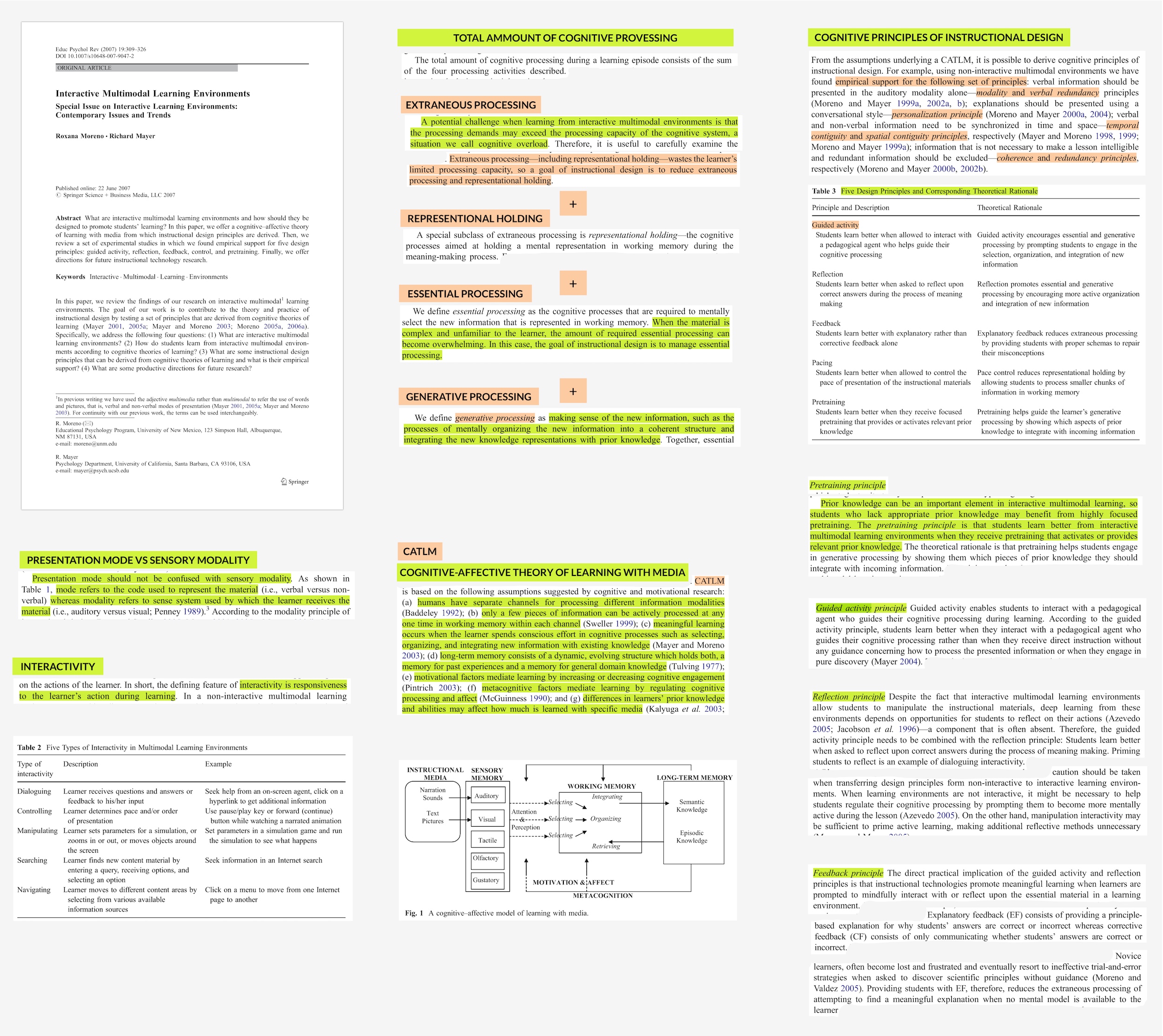Interactive Multimodal Learning Environments
Special Issue on Interactive Learning Environments: Contemporary Issues and Trends
Roxana Moreno & Richard Mayer
DOI 10.1007/s10648-007-9047-2
Published online: 22 June 2007

Key Concepts
CATLM – cognitive-affective theory of learning with media
5 Design Principles
Guided activity principle – enables students to interact with a pedagogical agent who guides their cognitive processing during learning. According to the guided activity principle, students learn better when they interact with a pedagogical agent who guides their cognitive processing rather than when they receive direct instruction without any guidance concerning how to process the presented information or when they engage in pure discovery
Reflection principle – Despite the fact that interactive multimodal learning environments allow students to manipulate the instructional materials, deep learning from these environments depends on opportunities for students to reflect on their actions
Feedback principle – The direct practical implication of the guided activity and reflection principles is that instructional technologies promote meaningful learning when learners are prompted to mindfully interact with or reflect upon the essential material in a learning environment.
Pacing principle – Another challenge to learning from interactive multimodal environments is the processing of dynamic visual displays such as instructional animations and videos. Imagine that an interactive learning environment presents a novice student with a narrated animation that explains how a scientific phenomenon works.
Cognitive assumptions used:
(a) humans have separate channels for processing different information modalities (Baddeley 1992)
(b) only a few pieces of information can be actively processed at any one time in working memory within each channel (Sweller 1999)
(c) meaningful learning occurs when the learner spends conscious effort in cognitive processes such as selecting, organizing, and integrating new information with existing knowledge (Mayer and Moreno 2003);
(d) long-term memory consists of a dynamic, evolving structure which holds both, a memory for past experiences and a memory for general domain knowledge (Tulving 1977);
(e) motivational factors mediate learning by increasing or decreasing cognitive engagement (Pintrich 2003);
(f) metacognitive factors mediate learning by regulating cognitive processing and affect (McGuinness 1990);
(g) differences in learners’ prior knowledge and abilities may affect how much is learned with specific media